Introduction
Specifications and Features
Announced in the summer, the PowerShot G3 X is a premium travel zoom model with a large one-inch-type type 20.2-Mpix BSI (back-illuminated) CMOS sensor and a 24-600mm equivalent f2.8-5.6 power zoom and sonic-type focusing lens. Although it doesn’t have a built-in electronic viewfinder, it features a larger-than-average 3.2-inch high-res (1.62M-dot) tilting touchscreen LCD panel, and if you really can’t do without an EVF, the 2.36M-dot, tilting EVF-DC1 is available for an extra $240. Despite that, the G3 X boasts some unusual features, not the least is the addition of dust and water-resistant sealing, which is virtually unheard of in this category.
Other high-end features include 5-axis stabilization with up to 3.5 stops’ correction, 1080/60p video, external microphone, and headphone jacks complete with manual levels control for monitoring audio, and there’s even an HDMI external recorder output option. The G3 X adopts what Canon calls their High-Speed AF system, which consists of 31 widely-spread AF points and a DIGIC 6-type processor for continuous shooting at up to 5.9 fps and at ISOs up to 12,800. However, things aren’t quite what they seem with regard to continuous shooting, as the rate drops to 3.2 fps in Servo AF mode, and both figures refer to JPEGs only. In RAW mode, the rate is a much more sedate 1.35 fps.
Like other recent PowerShot models, the G3 X has built-in WiFi with NFC, allowing users to share images and remotely control the camera from either an iOS or Android device.
The PowerShot G3 X measures 4.9 x 3.0 x 4.1” / 12.4 x 7.6 x 10.4cm and weighs 25.9 oz / 733g, body only. It is available now at $999 (USD).
Key Specifications
- 20.2-Mpix one-inch-type CMOS sensor
- 24-600mm (35mm equiv) f2.8-5.6 zoom
- 31-point High-Speed AF
- DIGIC 6 image processor
- 3.2-inch 1.62M-dot tilting touchscreen
- Full HD 1080p video at 24, 25, 30, 50 and 60p
- Expanded ISO 12800 max sensitivity
- 5.9 fps continuous shooting (JPEG only, focus-locked. 3.2 fps in Servo mode)
- Built-in Wi-Fi connectivity with NFC
- Optional EVF-DC1 available ($240)
Good overall sensor performance
An overall DxOMark score of 63 points is somewhat lower than expected after the 71 point score of the PowerShot G7 X, which uses a similar one-inch-type 20-Mpix BSI CMOS.
Canon PowerShot G3 X vs Canon PowerShot G7 X: Slight disadvantage in color depth
Although not a like-for-like comparison, measuring the differences between the G3 X and the maker’s PowerShot G7 X is interesting. Both models share a similar if not identical 20-Mpix BSI CMOS sensor, but the G3 X adopts an 8.8-220mm f2.8-5.6 zoom, whereas the lens on the G7 X has an 8.8-36.8mm focal length and a faster f1.8-2.8 maximum aperture.
Dynamic range is slightly narrower at base and ISOs up to 1600 show no changes after that. Despite the slight advantage in noise levels, the differences between the two models in our low-light ISO score would be negligible in the field.
Canon PowerShot G3 X vs Sony Cyber-shot DSC-RX10 vs Panasonic Lumix DMC-FZ1000: Competitive dynamic range with the best on test
Although arguably the Canon PowerShot G3 X is aimed at a slight different market, it is up against the Sony Cyber-shot RX10 and Panasonic Lumix DMC FZ1000, both very convincing rivals that use one-inch-type 20-Mpix CMOS sensors and offer built-in finders and faster continuous shooting (at least in JPEG mode).
At a not unreasonable $800, the Panasonic even has 4K (UHD) video recording capabilities. Neither model, however, can match the Canon’s substantial zoom range. That said, the $900 (reduced from $1300) Sony has a Zeiss-branded 24-200mm equivalent zoom with an impressive constant f2.8 maximum aperture, while the Panasonic has a Leica-badged 25-400mm equivalent f2.8-4.0.
Despite the differences in specs, the Panasonic sensor and lens imaging system combined achieves a similar overall score for sensor dynamics. However, there are differences between the two. While the G3 X has lower color sensitivity through ISO800, Canon has been able to improve its dynamic range by +0.6 Ev at base, and it remains slightly wider at all ISO settings. Low-light ISO scores, however, are identical.
Against the Sony, the overall sensor dynamics of the Canon unit aren’t quite as convincing, at least at low ISOs. The Sony has better color sensitivity and lower noise, but the company has been unable to leverage any real advantage in dynamic range, and what difference there is at base is due to a lower ISO. Although in our lab tests the Canon has a slight advantage in low-light performance, it’s more or less on par with the Sony and Panasonic.
Conclusion
Despite the mixed sensor performance — dynamic range is excellent and on par with the best in its class currently — the somewhat lower-than-expected color sensitivity (and corresponding noise levels) is slightly puzzling. Be that as it may, the Canon remains a tempting choice, not least because of its portability and zoom range, though the relatively slow maximum aperture at the long end and tardy continuous shooting rates maybe a limitation for some users.


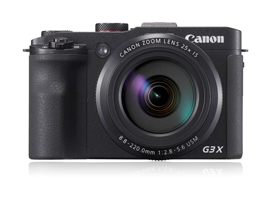




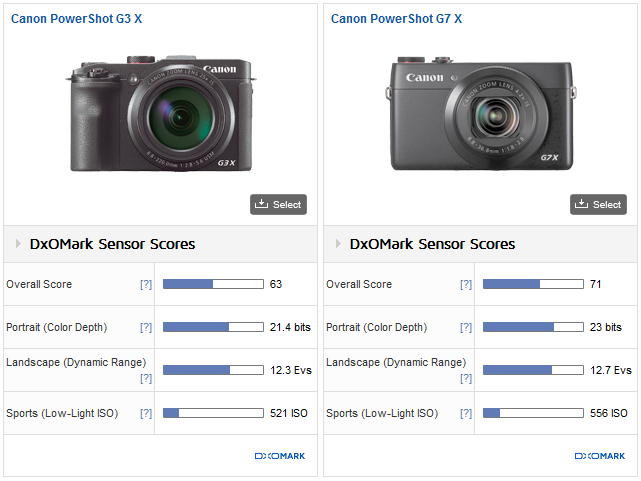
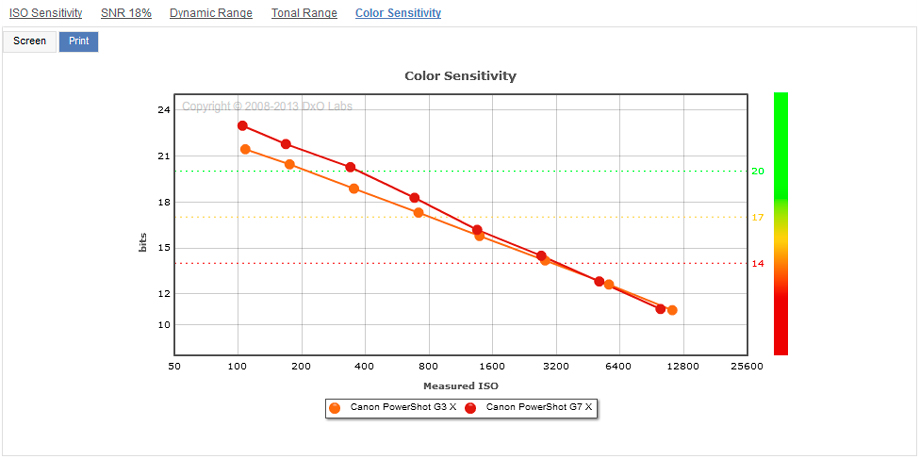
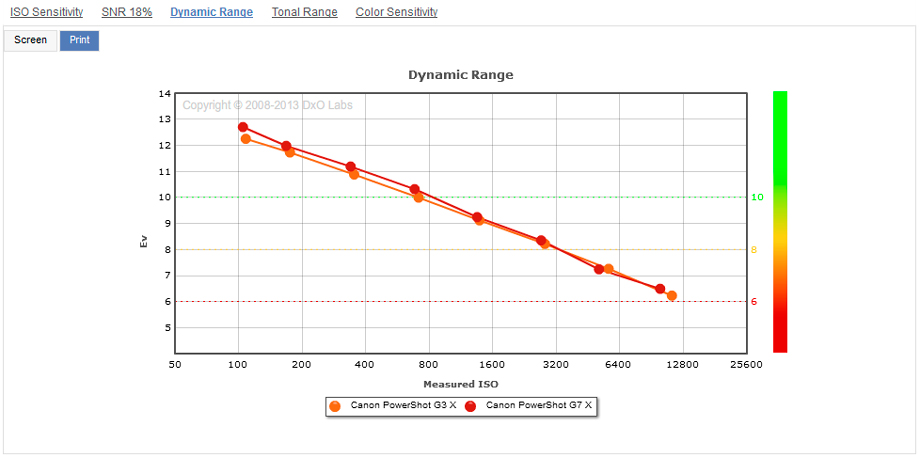
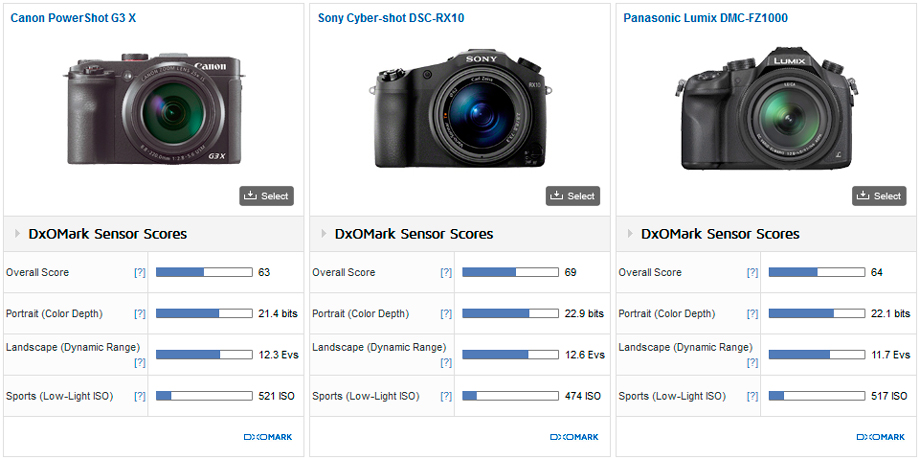
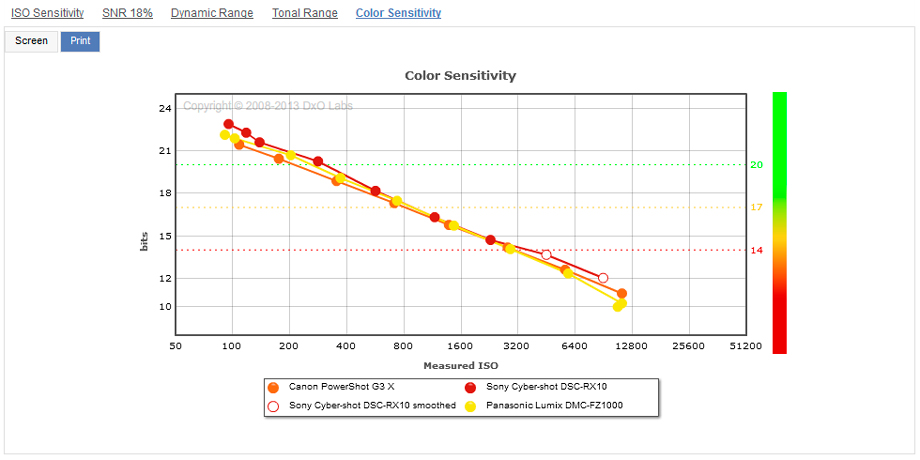
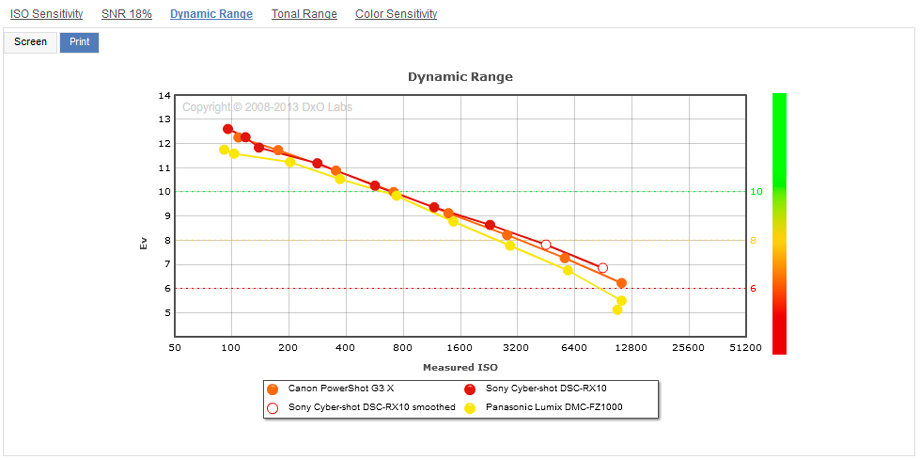
DXOMARK encourages its readers to share comments on the articles. To read or post comments, Disqus cookies are required. Change your Cookies Preferences and read more about our Comment Policy.